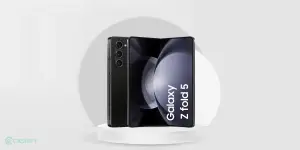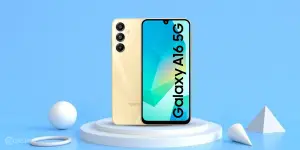Today, we will be discussing a very important topic which is 5G in India. In the Indian smartphone market, there have been back to back launches of 5G phones. There is not even a single brand that does not have its 5G phone launched in the market. Xiaomi, Realme, Samsung and even Apple, almost all brands have headed towards introducing 5G smartphones. As a consumer, it is very essential for all our readers to know what is 5G and how it will benefit them. Our readers should also be aware about when exactly 5G will be introduced in India and which devices will support its usage. This article will answer all these questions and eliminate the confusion going on in our readers’ minds.
What is 5G?
5G is the 5th generation of wireless mobile networks. Earlier you might have used 4G, 3G all of which started with 1G and then 2G came in. Finally, 5G will soon be launched and in over 60 countries 5G has already been launched. 5G is not only about fast speeds but it is more about Capacity, Bandwidth and Uniform and Consistent Network. This means that your phone’s network should be accessible anywhere and everywhere. 5G will be connecting everyone and everything which will provide ultra fast speeds along with low latency and more capacity.
For instance, if a 5G tower is installed in an area that is densely populated, consistent speed will be delivered to maximum people if 5G is uniformly distributed. 5G will bring in more reliability and it also promises increased availability. This simply means that even in very remote areas 5G will be reachable and you will be getting a good network in such areas as well. 5G is going to be very important and helpful in the coming times.
Ericsson and Huawei were all set to deliver most of the spectrum of 5G in India but the scenario has changed. The major three network carriers of India which are Jio, Airtel and Vi have decided to indigenously launch 5G in India following the concept of Aatmanirbhar Bharat. 5G trials have already begun in India and it is being assumed that by January 2022 the bidding of spectrum will be completed and within 1 year of it 5G will be deployed in India. Do you think as soon as 5G is deployed , your smartphone will gain a download speed of 1Gbps? Well, this is not the case and the reason behind it is 5G bands.
What are 5G bands?
5G comes in three major bands which are Low-frequency bands, Medium range frequency bands and High range frequency bands and not all bands are equal. Low and Mid band frequencies come under the Sub-GHz umbrella which is similar to the 4G LTE network that comes in Sub 6 GHz umbrella as well. However, the benefit of low band 5G networks is that they give a higher range which means the distance of coverage is way higher in low band frequencies.
4G networks provide an internet speed of 12 to 13Mbps whereas low band 5G networks will provide up to 100Mbps average internet speed. This is definitely an upgrade as it will allow the users to download any movies and games in the blink of an eye.
However, this isn’t the speed we have been dreaming of and this isn’t the speed that the TV commercials were boasting about. Let us take a look at the actual 5G speed that we were all waiting for. It is the 5G that will operate on high band frequencies or we can also call it mmWave technology.
When we talk about high speed internet, the frequency range goes up to 24 GHz. The benefit here is that the users will get a whopping 1Gbps average speed which can go up to 20Gbps too. However, the distance of coverage remains limited here.
For instance, if you want to use 5G at high bandwidth or with mmWave technology, you will have to install a 5G cell tower at very close distances which is not practically possible. This is the reason why 5G mmWave technology isn’t easy to set up all over the world.
Overall, it is the 5G mmWave technology that will give you great internet speed and you will also get to experience never seen before download and upload speed as well. 5G mmWave technology actually has the potential to change the way we use the internet but unfortunately there is no news around the introduction of mmWave technology support in India.
Which 5G bands will be available in India?
A lot of brands have introduced many 5G smartphones in India even before the 5G has been rolled out to users in India. These are the smartphones that will support only low band frequencies or Sub 6 GHz bands will only be available. The bands these phones come with are N41, N77 or N78 which operate only on low frequencies. Even the flagship devices support only Sub 6 GHz bands in India. For instance, OnePlus 9 Pro comes with N41 and N78 bands in India whereas OnePlus 9 Pro US variant supports 5G mmWave bands which are N258, N260 and N261. These bands operate on high frequencies. We can see a similar case with the iPhone 12 series where the iPhone 12 US variant comes with separate mmWave 5G bands.
However, when we talk about iPhone 12, iPhone 12 Pro and iPhone 12 Pro Max Indian variants then they come with low band 5G frequencies support which are N77, N78 and N79 bands. We are assuming that until the launch of 5G in India, more brands will incorporate 5G bands in their devices. But for now all the 5G phones that have been launched in India come with low frequencies support only.
What will be the speed difference?
It is evident that there will be a difference in speed once 5G is rolled out. However, we will throw light on how much difference we will be seeing in the speed. If you install a speed test application on your phone in recent times, you will witness 10-12Mbps speed on your 4G LTE network which will go up to maximum 20Mbps which is the surfing speed and not the download speed. For instance, if you get 20Mbps surfing speed then you will get around 2Mbps download speed in 4G LTE network.
However, when we talk about 5G networks, you will get around 90-100Mbps surfing speed on low frequency bands whereas you will get around 15-20Mbps download speed whenever 5G is rolled out in India. This is a major drastic change that will take place in the internet world after the launch of 5G.
4G vs 4G+ vs 5G
When we tested the 4G+ network with carrier aggregation, we received a speed of around 80-90Mbps whereas 5G networks will provide around 100-150Mbps speed in low band frequencies which means there might not be a major difference of speed in 4G+ and 5G. However, when we talk about the USA where 5G has already been deployed and people have been using it for more than 1 year now, the speed test results were as follows. AT&T recorded around 70Mbps download speed, Verizon recorded similar speed between 65-70Mbps whereas Sprint users also recorded 70-75Mbps download speed.
However, with some cities having access to the mmWave 5G bands the download speed has been massive with Verizon giving up to 600Mbps download speed and some people even claim that the speed goes up to 1Gbps as well. So, the conclusion is that if you are willing to experience such great speeds, 5G mmWave bands should be installed in your smartphone.
However, we already discussed that deploying the mmWave bands would be a bit difficult in India. It will take a lot of time as the main reason behind it is that 5G mmWave technology’s penetration power is very less and the distance of coverage is less as well. India has a very huge land to cover for networks and India has a dense population which means it has huge capacity too.
There is a lot of congestion too which means installation of mmWave technology would come with a massive setup cost and the results would come out unsatisfactory as well. This is the reason we can assume that Sub 6 GHz bands will only operate in India but 5G carrier aggregation would definitely be introduced. This simply means that the way you have been using 4G+, you will also be able to use 5G+ in the future.
When is 5G coming to India?
Each one of us is curious about the commercial launch of 5G in India. We are all eagerly waiting for the internet upgrade. Let us have a look at India’s top 3 telecom operators and their plans about 5G launch in India.
Airtel recently tested 5G in their Hyderabad unit where they tested the 5G service over a commercial network. Airtel claims that they are ready and they are just waiting for the spectrum to roll out. The company also claims that within 6-8 months of spectrum roll out, Airtel will be ready to serve its users with 5G network. Airtel has even tied up with Qualcomm in order to accelerate the 5G service plan in India. This means the commercial launch of Airtel 5G services in India can be expected shortly after the spectrum roll out. Airtel will be providing its 5G services within the 6-8 months of spectrum roll out in India.
Reliance Jio generally announces all their big decisions in their Annual General Meeting but due to the pandemic Jio is lagging in their schedule already and half of the 2021 year has passed already. This indicates that 5G roll out for Jio may be between July-September 2022. After this, we will have to keep an eye on when this 5G service will reach the customers.
On the other hand, Vi (Vodafone and Idea) claims that their network is already as strong as 5G but looking at the global scenario, they think launching 5G services in India would be very difficult. However, after the spectrum roll out in January 2022, Vodafone may make an official announcement. No 5G trials have been conducted by Vi in India till now. This is the only information that we have from Vi till date and there is no further update in their 5G launch program.
This is the final call and we have mentioned all the information related to 5G launch in India, 5G speeds, bandwidths and everything related to 5G that we know in the above article.
















